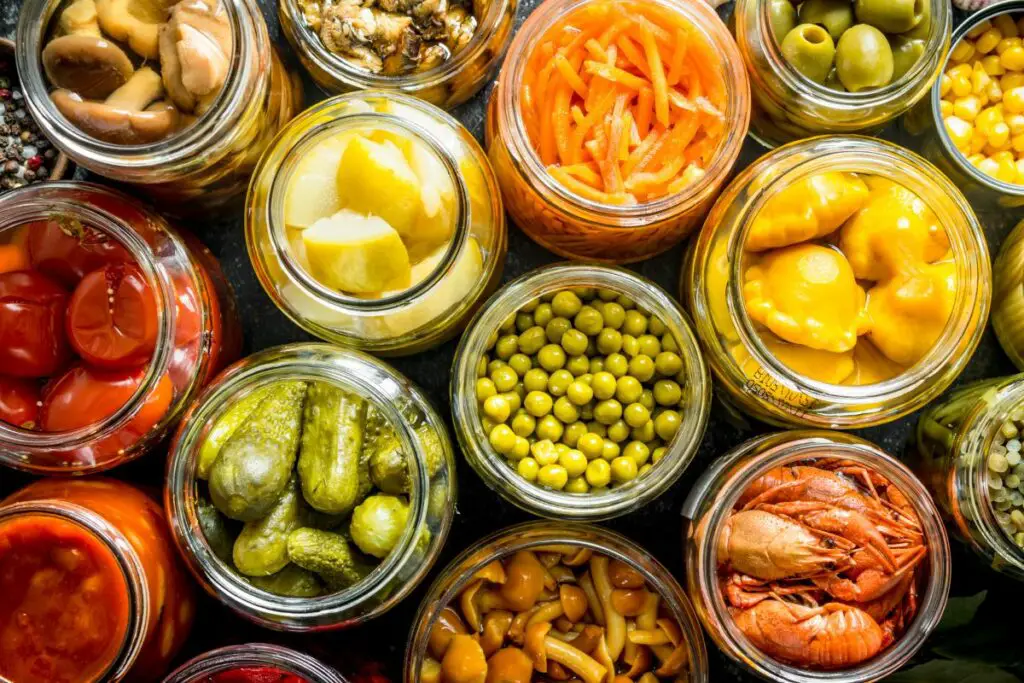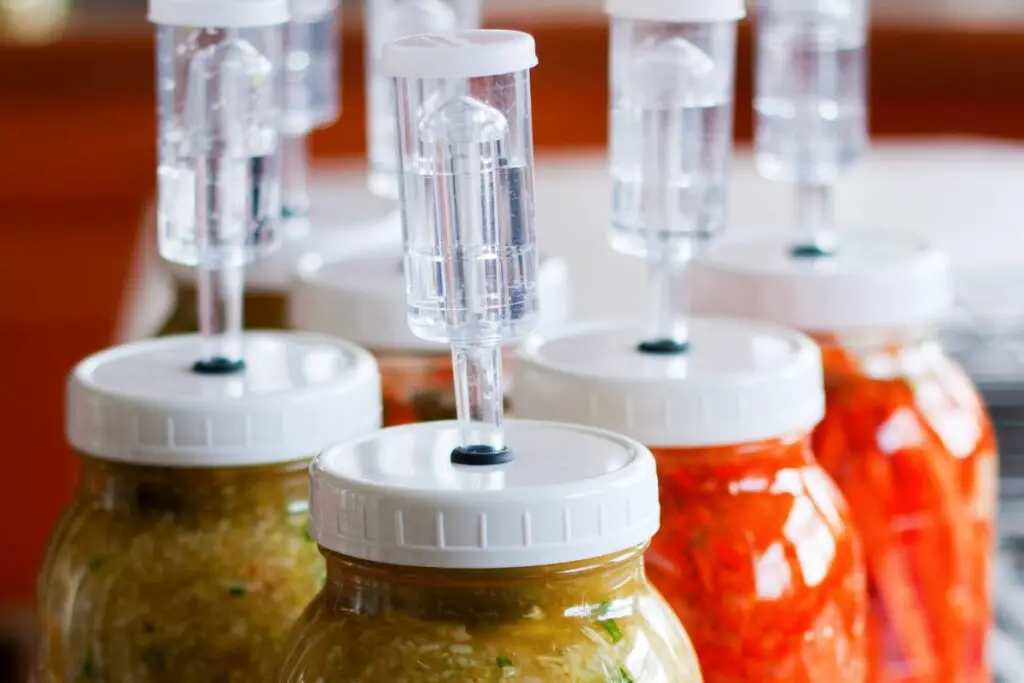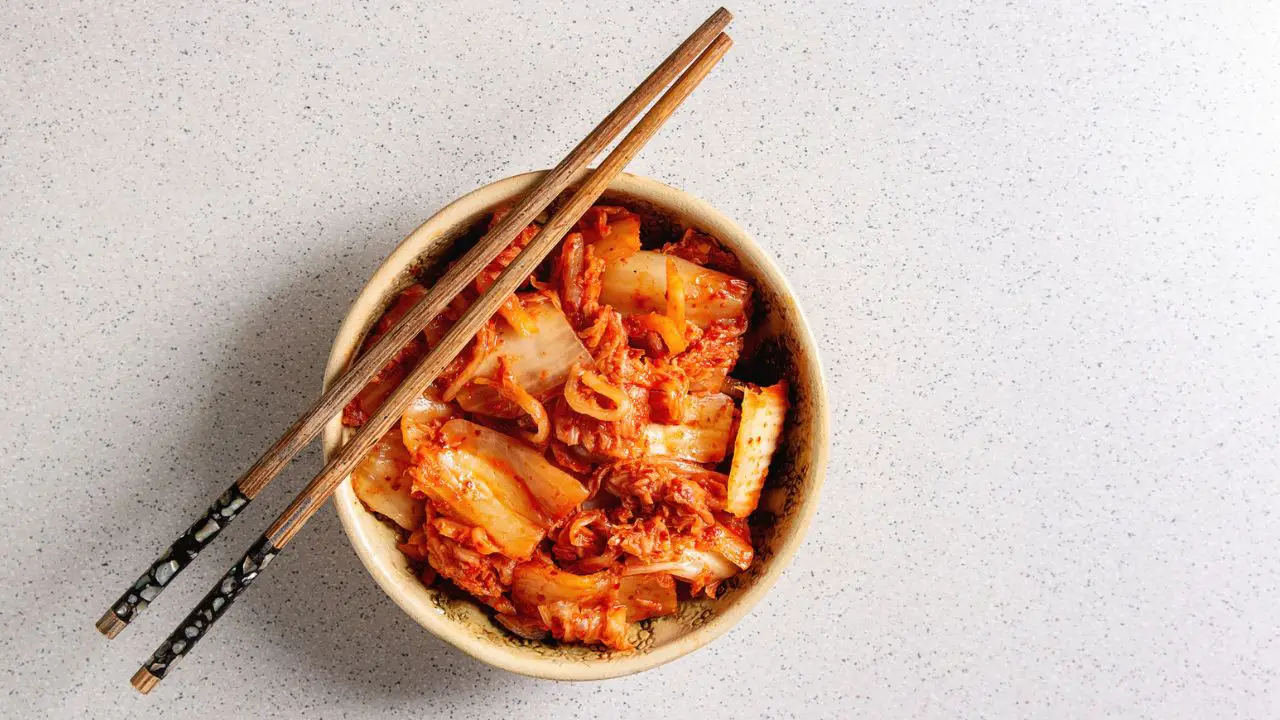Kimchi is a deliciously spicy, tangy food that originated in Korea. This wonderful side dish has some serious health benefits that are derived from the method in which it is prepared.

While many understand that cabbage and an assortment of spices are the primary ingredients in this food, fewer understand how kimchi is created. Does it achieve its unique flavor through a process of pickling or fermentation?
Is Kimchi Pickled or Fermented?
Pickling Vs. Fermentation

Pickling and fermentation are ancient food preservation techniques, and both can increase the shelf life of food through means of a natural preservation process.
When you taste foods that have been pickled or fermented, you will notice that both methods of preservation result in a food developing a sour, somewhat acidic taste.
Though the taste of pickled and fermented foods is fairly similar, the processes used to obtain the results are different from one another.
So, how do pickling and fermentation differ from one another?
Before answering this question, let’s discuss the similarities and differences between pickling and fermentation.
Pickling

The process of pickling involves taking food and immersing it in an acidic mixture to provide it with its characteristic flavor. The acidic mixture that is used in pickling frequently involves a liquid like vinegar, as a vinegar solution can shift both the taste and texture of food.
A common method of pickling foods involves heating a mixture of vinegar, sugar, salt, and other optional ingredients until it’s boiling.
Once boiling, the mixture is poured over the food that is to be pickled, and it is allowed to soak. This process gives the food its unique pickled taste while preserving the food.
Beyond the popular pickles (cucumbers), other vegetables and fruits also work well for pickling, like asparagus, bell peppers, beets, cauliflower, blueberries, carrots, fennel, grapes, ginger, green beans, mushrooms, parsnips, onions, peaches, radishes, rhubarb, tomatoes and you may have even seen pickled eggs.
Fermentation

Considering fermentation, the taste is not derived from combining food with an acidic solution like vinegar. Rather, fermentation is the process of converting carbohydrates to alcohols and organic acids using yeast or bacteria.
The most common type of fermentation is ethanol fermentation, which produces beer, kombucha, and wine. Other types of fermentation include lactic acid fermentation, which produces yogurt, cheese, kimchi, fermented cucumbers, sauerkraut, and acetic acid fermentation to create kombucha, apple cider vinegar, ginger beer, kefir, and white or red wine vinegar.
Therefore, no added acidic solution or heat is required to ferment food.
To successfully ferment food, simply put a fruit or vegetable into a sealed container and add a little salt (and other desired ingredients). The natural bacteria in food will then transform the food’s sugars and carbohydrates into an acid that will preserve the food. This process takes longer than pickling but achieves a similar taste and more health benefits.
Note: Fermented foods are an excellent source of probiotics because they contain live gut-friendly bacteria. ONLY foods that are fermented with salt and not vinegar contain probiotics.
Read Also: Difference Between Kefir, Soured Milk, And Yogurt?
Kimchi Preservation

So, is kimchi pickled or fermented?
Kimchi is not picked but rather fermented. The process that turns the Chinese cabbage, garlic cloves, and ginger into kimchi is called Lacto-fermentation by Lactobacillus bacteria.
Though there are hundreds of variations on kimchi, all rely on fermentation to create the desired result.
Records indicate that kimchi has been around for over one thousand years, as this dish was originally created as a means of preserving vegetables during the winter months.
The way that kimchi was historically made involved putting salted, chopped vegetables into a ceramic pot and burying it in the ground to allow it to ferment.
Today, processes to make kimchi are more streamlined, but the foundations to make the dish remain the same. Through the process of fermentation, kimchi is naturally preserved and given tasty flavors that have stood the test of time.
Like many other fermented foods, kimchi contains gut-friendly live cultures, which makes it an excellent probiotic.
Kimchi also has an excellent nutritional profile; it is low in calories and packed with nutrients like folate, iron, and vitamins K2 and B6.
Read Also: 9 Best Fermentation Blogs (Start Fermenting Food Today).
